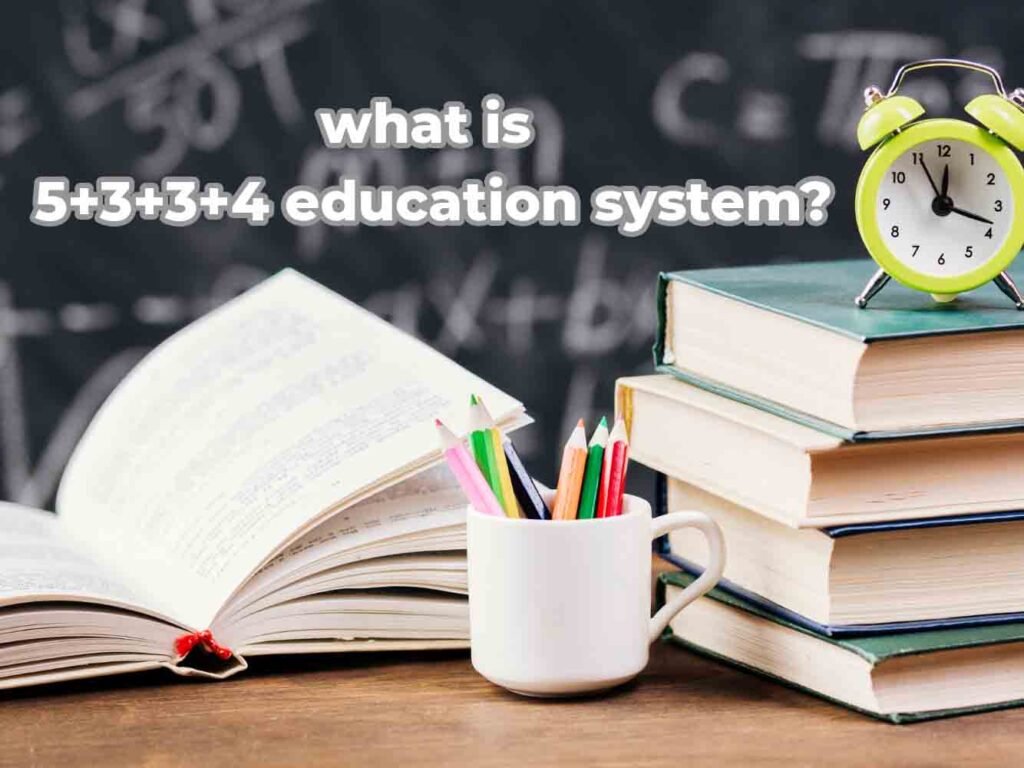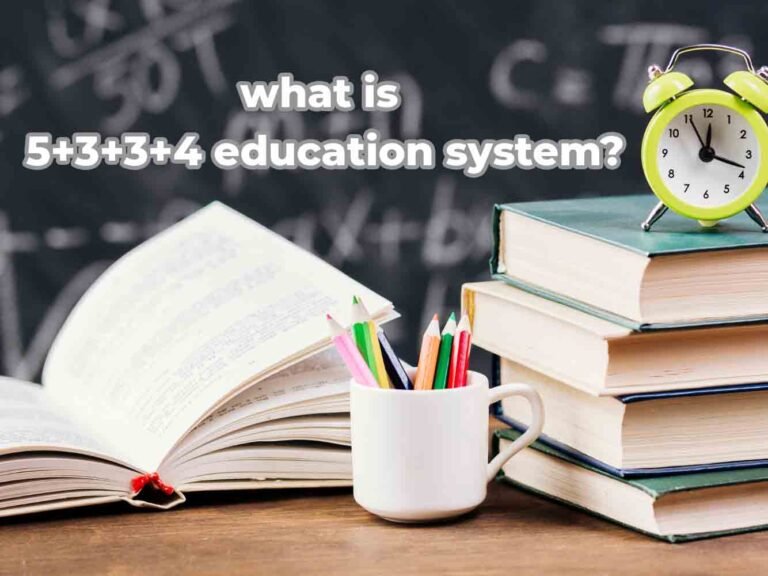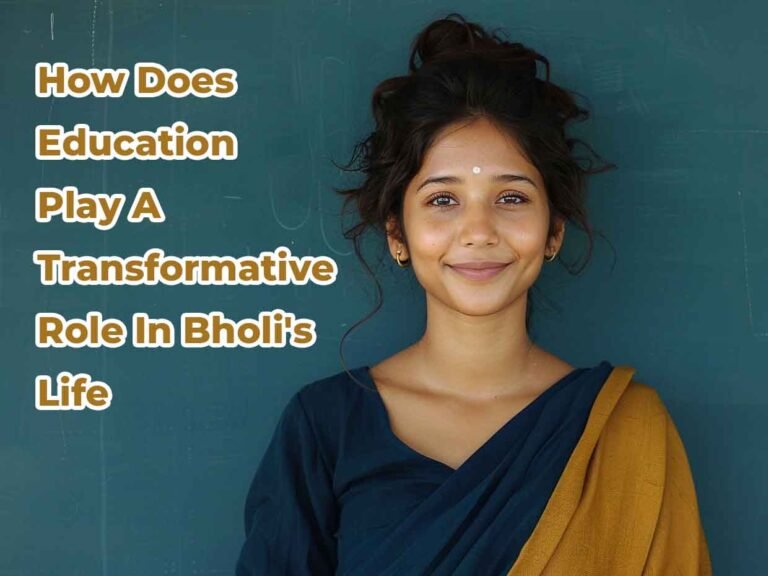Introduction
Originally presented under India’s National Education Policy (NEP) 2020, the 5+3+3+4 educational model presents a revolutionary approach to learning. This model is supposed to replace the traditional 10+2 Structure with an eye toward a more comprehensive and adaptable educational framework that fits the developmental needs of students at different times. Four stages comprise the new system: foundational, preparatory, middle, and secondary. Five years total—three years of pre-primary education and two years of primary school—covering the basic stage This period emphasizes play-based and activity-based learning, therefore fostering in young children curiosity and imagination.
The system adds the preparatory, middle, and secondary stages—each spanning three, three, and four years—after the basic stage. While the middle stage stresses experienced learning and the introduction of more abstract ideas, the preparation stage works on basic reading and numeracy skills. Comprising four years, the secondary stage gives pupils the chance to delve further into many disciplines, therefore preparing them for either vocational training or higher study. This new approach seeks to give a well-rounded education, thereby promoting critical thinking, problem-solving skills, and general student development—ensuring they are better equipped for the demands of contemporary society.
Historical Context
Comprising part of India’s National Education Policy (NEP) 2020, the 5+3+3+4 system marks a significant shift in the country’s educational scene. Before now, the accepted paradigm was the 10+2 system, in use since 1986. Designed to meet evolving needs for education, the new system aims to produce a more flexible, all-encompassing, multidisciplinary learning environment. The NEP 2020 seeks to equip young people for a better future and link India’s educational system with international criteria.
The historical background of this change is based on the awareness that the old paradigm was inadequate for encouraging critical thinking, creativity, and general student development, as well as for promoting and Emphasizing basic learning, skill development, and adaptation to a fast-changing environment; the 5+3+3+4 approach is meant to fill up these voids.
Breaking Down the 5+3+3+4 Structure
The 5+3+3+4 Structure offers a reinterpretation of the academic phases a student experiences. The learning process is broken down into four separate phases: Foundational, Preparatory, Middle, and Secondary. The first five years (5) concentrate on fundamental learning, including activity-based and play-based approaches. The next three years (3) are preparatory, during which the emphasis moves to formal instruction with an eye toward basic literacy and numeracy.
The next three years (3) constitute the intermediate stage and bring more abstract ideas from several disciplines. Finally, the remaining four years (4) constitute the secondary stage in which students are able to select courses depending on their preferences, therefore preparing them for either higher education or a career path. This framework is made to fit children’s cognitive growth phases more precisely.
Foundational Stage (Ages 3-8)
Since it shapes all future learning, the foundation stage is absolutely vital. Covering ages three to eight, this period covers five years and consists of two years of primary school following three years of pre-primary education. Over these years, the focus has been on using play-based and activity-based learning strategies to acquire fundamental literacy and numeracy skills. Children at this age are quite impressionable. Hence, the Foundational Stage emphasizes encouraging their innate inventiveness and curiosity.
A stimulating setting that promotes inquiry and discovery depends much on the teachers. Children can learn at their speed since the curriculum is made to be adaptable and fun. Students should have a strong basis in fundamental ideas by the end of this period, which will be developed in the next ones.
Preparatory Stage (Ages 8-11)
Comprising three years of official schooling, the Preparatory Stage serves pupils between the ages of eight and eleven. From play-based learning to more disciplined, formal education, this phase represents the change. With an introduction to the sciences, arts, and social subjects, the curriculum over these years emphasizes laying a firm basis in reading, writing, and arithmetic. Although the approaches to instruction are somewhat more formal, experiential learning remains really important.
Students are urged to investigate topics hands-on, therefore strengthening their knowledge of fundamental ideas. This period is crucial since it gets pupils ready for the more rigorous Middle Stage academic assignments. Students should have acquired fundamental literacy and numeracy by the conclusion of the Preparatory Stage and be ready to handle more difficult topics.
Middle Stage (Ages 11-14)
Comprising ages 11 to 14, the Middle Stage marks a dramatic change in the educational landscape. By broadening students’ knowledge of several disciplines—including mathematics, sciences, social sciences, arts and humanities—these three years are especially targeted. By moving from the integrated and generalist approach of the past stages, the curriculum gets increasingly subject-oriented. As students encounter more abstract ideas, we stress critical thinking, problem-solving, and analytical skills.
Designed to be a transitional phase where students start to specialize in areas of interest, the Middle Stage helps to provide the groundwork for their future academic and career decisions. Teachers are urged to use pedagogical strategies meant to promote intellectual curiosity and autonomous learning. Helping pupils get a better knowledge of the disciplines they will follow in the Secondary Stage depends on this level.
Secondary Stage (Ages 14-18)
Comprising 14 to 18 years old, the Secondary Stage ranks last in the 5+3+3+4 educational system. There are two phases to this stage: grades 11 and 12 and grades 9 and 10. Students have the chance to concentrate on areas of interest throughout these years, therefore enabling more academic independence and discovery. With its adaptability and wide spectrum of courses—including academic, vocational, and artistic ones—the curriculum is meant to Emphasize in-depth information and practical skills to equip students for both the workforce and higher education, helping them This period also underlines the acquisition of essential life skills including communication, teamwork, and problem-solving. Students’ future job pathways are greatly shaped by the Secondary Stage, which also guarantees their equipment to face the demands of the current society.
Benefits of the 5+3+3+4 System
The 5+3+3+4 education system provides various advantages that help to solve the shortcomings of the former one. First of all, it guarantees that students learn ideas at the appropriate age by matching the curriculum with the phases of cognitive growth of children. By emphasizing the whole growth of children instead of only academic success, this system also supports a more comprehensive approach to education. Early on, vocational training and skill development serve to equip children for the workforce.
Furthermore, the freedom in topic selections throughout the Secondary Stage lets students follow their interests and aptitudes, therefore producing more individualized and significant learning opportunities. By emphasizing basic knowledge, critical thinking, and problem-solving, the approach helps students develop the tools they need to thrive in a society fast evolving.
Challenges and Criticisms
Although the 5+3+3+4 educational model has numerous benefits, it is not without flaws and objections. The efficient application of the new curriculum in a nation like India, where educational resources and infrastructure differ greatly, is one of the key difficulties. Furthermore under question is teachers’ preparedness to fit the new educational approaches this system demands. Critics contend that the method might not reach the intended results without enough teacher development and training.
Furthermore, raising questions is the early introduction of vocational training and topic specialization, resulting in higher strain on pupils. Some teachers think that, without appropriate direction, the freedom in subject choices could result in a lack of depth in knowledge. Maintaining equal access to high-quality education for every student from all socioeconomic levels nevertheless presents a great difficulty.
Comparison with Other Education Systems
The 5+3+3+4 method has parallels with educational models in nations like Finland and Japan, where early childhood education is given great weight. It differs, nonetheless, from the conventional Western model, which sometimes runs a 12-year education system devoid of the several phases observed in the Indian system. By emphasizing the whole growth of students, the 5+3+3+4 structure is more in line with worldwide criteria than the old 10+2 system.
One sees as significant steps the inclusion of vocational training and the early age emphasis on critical thinking. Unlike systems in nations like the United States, where there is a great focus on standardized testing, the Indian system under NEP 2020 attempts to lower exam stress and encourage a more comprehensive education.
Role of Technology in the New System
Effective use of the 5+3+3+4 teaching method depends much on technology. As digital learning platforms become more popular, the new approach promotes using technology in classrooms to improve learning conditions. Digital classrooms, e-learning materials, and online tests are starting to shape the course of instruction directly. The approach also encourages the use of technology for teacher development and training, therefore arming teachers with the tools they need to implement the new curriculum with effectiveness.
Furthermore considered as a tool to close the disparity between urban and rural education is technology since it gives access to high-quality educational materials all over the nation. A modern, effective, and easily available education system that gets pupils ready for the challenges of the twenty-first century depends on the integration of technology.
Teacher Training and Development
The training and development of teachers will mostly determine the effectiveness of the 5+3+3+4 educational system. The new system mandates teachers use creative approaches that fit students’ cognitive development phases. Comprehensive teacher training courses emphasizing current pedagogical approaches, digital literacy, and student-centered learning are, therefore, absolutely necessary in this change. The NEP 2020 stresses via seminars, online courses, and peer learning teachers’ ongoing professional growth.
Teachers are also urged to work together to implement best practices and foster a positive classroom. The effectiveness of the 5+3+3+4 system depends critically on instructors’ being ready to implement the new curriculum. The objectives of the NEP 2020 might not be completely realized without enough support and training.
Parental Involvement
A mainstay of the 5+3+3+4 education system is parental involvement. The new method promotes active involvement in the learning process of parents since it acknowledges their part in the path their children travel. Particularly in the early years of their children’s education, parents are supposed to work with teachers to help their growth. To guarantee that children get the required direction and assistance at home, the NEP 2020 supports frequent communication between parents and institutions.
Additionally advised to help parents grasp the new curriculum and their part in their child’s education are seminars and orientation programs. The 5+3+3+4 approach seeks to build a more supportive and nurturing learning environment for pupils by means of strong cooperation between parents and teachers.
Policy and Governance
Strong policy and governance structures are needed for the 5+3+3+4 education system to be implemented and guaranteed success. The NEP 2020 lists numerous steps to simplify the administration of the educational system, among which is the decentralization of decision-making to enable more localized solutions. Furthermore, underlined in the policy is the requirement of strong monitoring and evaluation systems to evaluate the performance of the new system and guide required changes.
Providing the tools and infrastructure required to carry out the new curriculum all over the nation depends on the government in great part. Furthermore encouraged are alliances with NGOs and commercial companies to help to create teacher training courses and instructional materials. Overcoming the difficulties related to the 5+3+3+4+4 system and reaching the objectives of the NEP 2020 depend on good governance and policy execution.
What is the 5+3+3+4 Formula in National Educational Policy?
As stated in the National Educational Policy (NEP) 2020, the 5+3+3+4 formula captures a complete overhaul of the conventional Indian educational system. This approach to learning at every level is more customized since it is meant to be more in line with the cognitive and developmental phases of children. Early childhood care and education take the front stage in the first five years (Foundational Stage), therefore guaranteeing a firm basis in fundamental reading, numeracy, and social skills.
The next three years (Preparatory Stage) concentrate on strengthening this basis with a slow transition towards formal education and including more organized and participatory learning strategies. The Middle Stage, the next three years, brings multidisciplinary studies and inspires critical thinking and innovation. With more focus on freedom, choice, and depth of study in selected disciplines, the last four years—Secondary Stage—are meant to equip students for higher education and career paths. This mix seeks to produce in India an inclusive, flexible, future-ready educational system.
Conclusion
The 5+3+3+4 educational model marks a major change in our attitude to learning. It seeks to equip students for the future by emphasizing flexibility, experiential learning, and whole development. Although problems still exist, this new system’s possible advantages make it an interesting model for educational change.
FAQs
Q: What are the main stages of the 5+3+3+4 education system?
Foundational ( Ages 3–8), preparatory ( Ages 8–11), middle ( Ages 11–14), and secondary ( Ages 14–18).
Q: How does the 5+3+3+4 system differ from the previous 10+2 system?
Emphasizing vocational training and skill development, the new approach more closely conforms to children’s cognitive development.
Q: What role does technology play in the 5+3+3+4 system?
Improving educational opportunities, teacher preparation, and closing the learning gap between urban and rural areas all depend on technology.
Q: Why is teacher training important in the new education system?
Effective delivery of the new curriculum depends on teachers using digital tools and new pedagogical approaches.
Q: How can parents support their children in the 5+3+3+4 system?
Regular communication with teachers and home support of their development helps parents to engage in the learning process of their children actively.






















